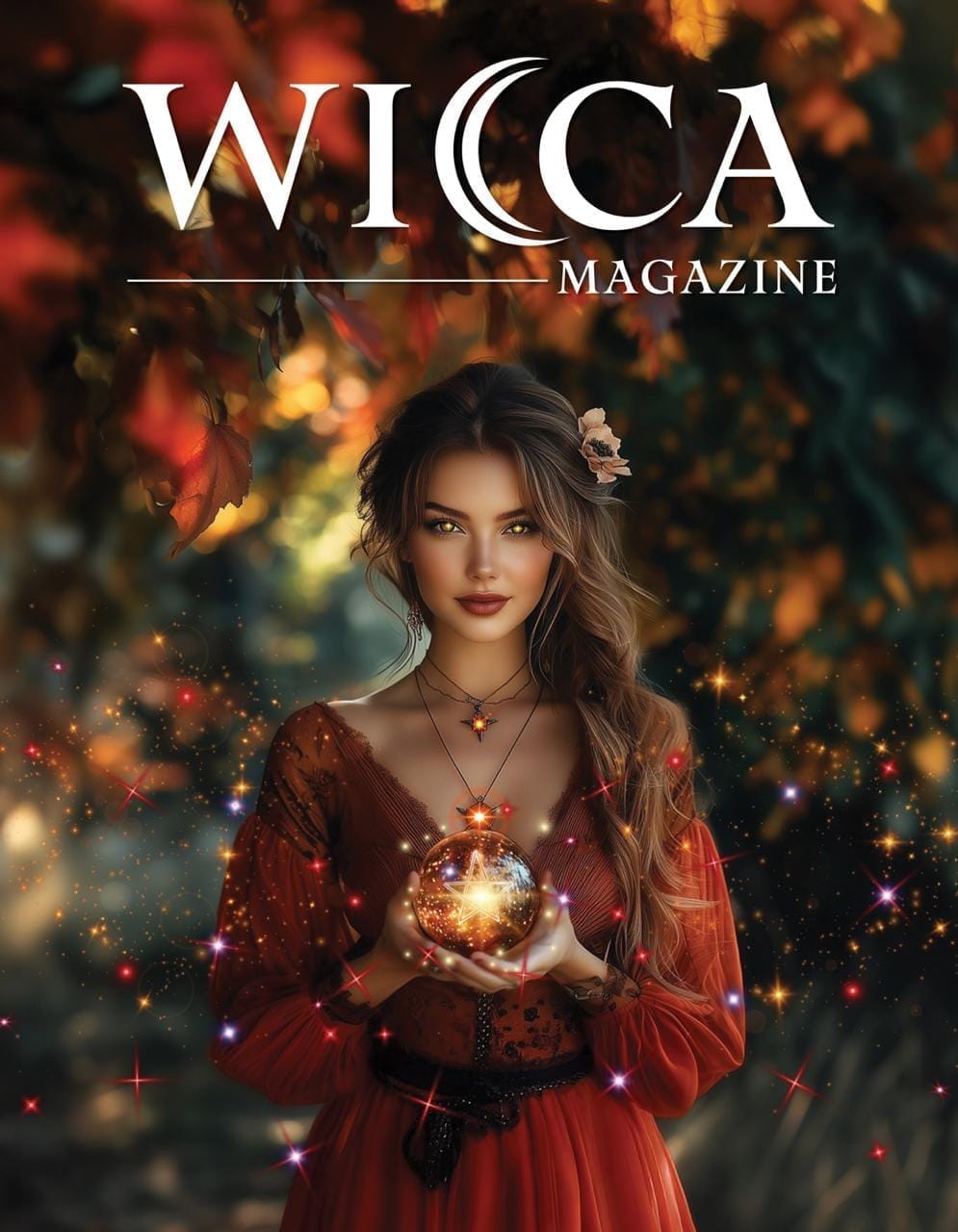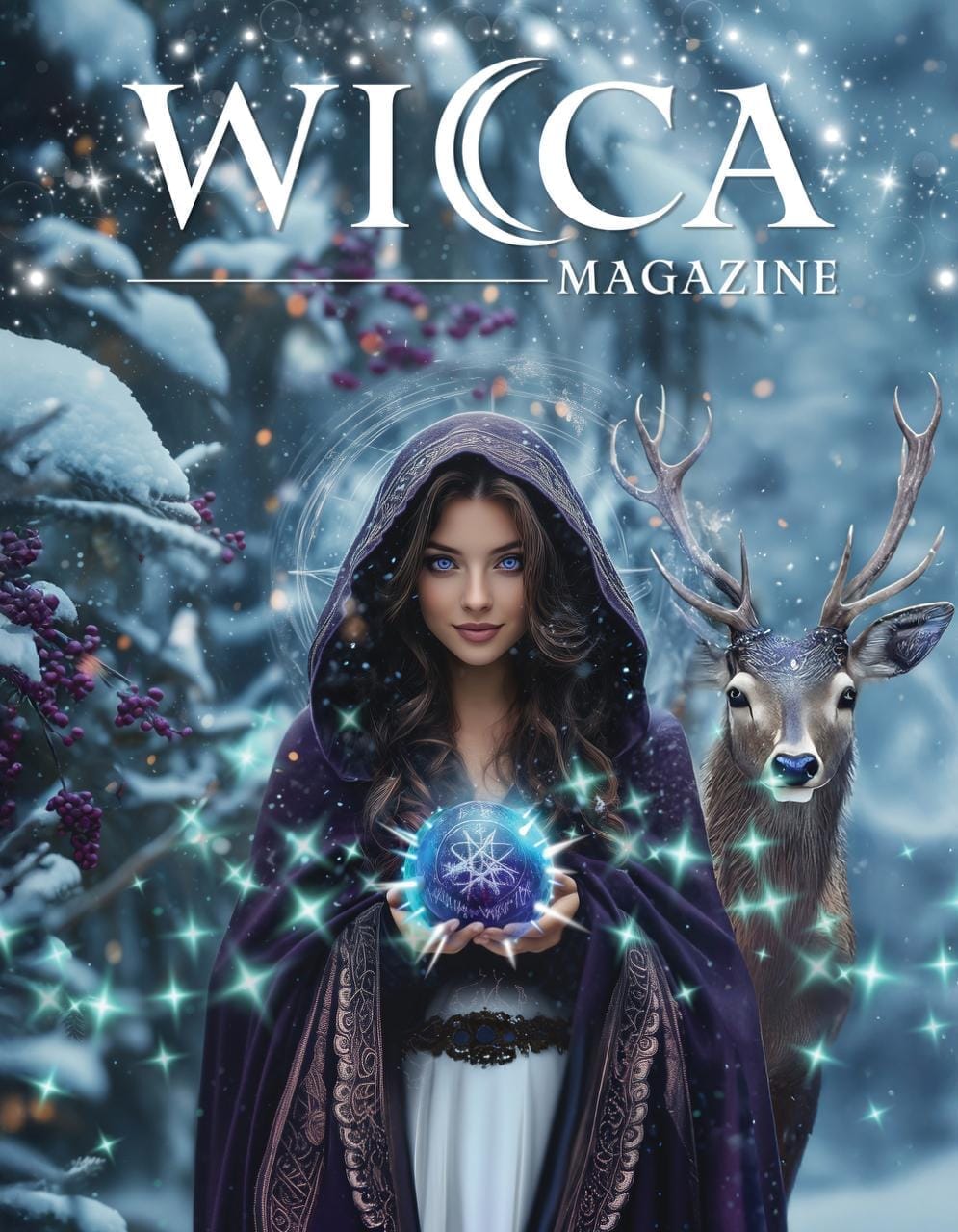


Unlock the Magick of Yule! - Your Wicca Magazine Issue Awaits
Step into the season of light with Wicca Magazine. Each digital issue is a sacred offering of spells, rituals, and Wiccan wisdom — honoring ancient paths and empowering your modern magick. Your craft, your journey, your magickal sanctuary.
In the pantheon of deities revered in various spiritual paths, including Wicca, Pan stands out as a unique and compelling figure. Known as the god of the wild, shepherds, flocks, and rustic music, Pan is often depicted with the hindquarters, legs, and horns of a goat. His energetic, untamed nature, deeply connected to the wilderness and natural world, makes him a symbol of primal force and instinct. But there is so much more to Pan than is commonly known. Let us unpack this enigmatic deity together now!
Origins and Mythology
Pan, a deity whose origins are deeply rooted in ancient Greek mythology, presents a complex and intriguing figure in the pantheon of gods. Born in Arcadia, a region known for its rugged, natural beauty, Pan is traditionally considered the son of Hermes, the fleet-footed messenger of the gods, and a nymph, possibly Dryope.
In the myths, Pan’s life is as wild and untamed as the landscapes he frequents. He is the lord of the woodlands, the patron of shepherds and their flocks, roaming the mountainous regions and forested valleys. His presence is pervasive in the rustling leaves, the remote echoes in the mountains, and the secluded nooks of the forest. Pan is not a god of grand temples or cities; instead, he is at home among the rocks, streams, and trees, playing his signature pan flute, which he crafted himself.
Associated with fertility and the season of spring, Pan’s stories are filled with pursuits of nymphs and playful interactions with other deities. Yet, he also has a darker, more mysterious side, as the instigator of sudden, groundless fear in humans, known as "panic." This dual nature of Pan, both joyous and fearsome, highlights the multifaceted relationship humans have with nature – a source of beauty and bounty, yet also unpredictable and awe-inspiring.
Pan in Wicca and Modern Paganism
In the realms of Wicca and modern Paganism, Pan holds a special place as an emblematic figure representing the untamed, instinctual forces of nature. His energy, symbolizing the wild and primal aspects of life, resonates deeply within these spiritual paths that celebrate the interconnectedness of all living things and the cycles of the natural world.
Wiccans and Pagans often look to Pan as a deity of fertility, virility, and unbridled natural energy. He is revered for his deep connection to the wild, his musical prowess, and his embodiment of the life force present in the wilderness. Rituals and celebrations invoking Pan are usually centred around embracing our instinctual selves, recognizing the importance of passion, desire, and creativity in our lives.
Pan's association with nature and fertility makes him a common figure in rituals celebrating the Sabbats, especially those marking the change of seasons and the fertility of the Earth, such as Beltane and Midsummer. His playful yet potent energy is invoked to awaken the spirit of joy, to inspire freedom and liberation from societal constraints, and to remind practitioners of the importance of maintaining a harmonious balance with the natural world.
Moreover, Pan's character encourages a deeper understanding of our own primal nature. In modern Pagan practices, he serves as a guide to exploring and accepting the wild, untamed parts of our psyche, fostering a holistic approach to spirituality that embraces all aspects of the self and the universe. This connection with Pan helps to cultivate a sense of freedom, creativity, and a deep, intuitive understanding of the natural rhythms of life.
Myths Surrounding Pan
Pan is a figure shrouded in myths and legends, many of which highlight his playful, mischievous nature, and his deep connection to the natural world. Here are some notable myths surrounding him.
The Birth of Pan
Pan’s parentage is often a subject of mythic debate. He is commonly considered the son of Hermes and a nymph, possibly Dryope. In some tales, his unexpected appearance at birth, half-man and half-goat, caused his mother to flee in fear, but Hermes lovingly embraced his son, wrapping him in a hare’s pelt and bringing him to Olympus.
Pan and Syrinx
One of the most famous myths involving Pan is the tale of Syrinx, a beautiful nymph. Pan, known for his amorous pursuits, fell in love with Syrinx, but she rejected his advances and fled. When she reached the river Ladon and could flee no more, she begged the water nymphs to transform her, and she turned into river reeds. As the wind blew through the reeds, they produced a melancholic melody. Pan, still infatuated, took some of the reeds and fashioned them into the first set of pan pipes, or syrinx, which became his signature musical instrument.
Pan and the Origin of Panic
The word 'panic' is derived from Pan’s name, reflecting his association with sudden, irrational fear, especially in lonely or wild places. According to myth, Pan enjoyed startling travellers wandering in the forests and mountains. His loud shout or roar would terrify them, causing them to flee without looking back, a phenomenon that came to be known as 'panic'.
Pan and Apollo’s Music Contest
Another legend tells of a music contest between Pan and Apollo, the god of music. Pan boasted that his music was powerful, playing his rustic pipes with skill. King Midas, who was judging the contest, declared Pan the winner, but the other gods disagreed, favouring Apollo’s lyre. In anger, Apollo transformed Midas’ ears into those of a donkey for his lack of musical taste.
Pan’s Role in the Battle of Marathon
In another story, Pan helped the Athenians win a crucial battle against the Persians at Marathon. He instilled panic among the enemy soldiers, leading to their defeat. In gratitude, the Athenians worshipped Pan and celebrated him in a cave on the Acropolis.
These myths and legends of Pan depict him as a deity deeply intertwined with the natural world and human emotion, representing both the joyous freedom of the wild and the inexplicable fears of the unknown. His enduring legacy in myth and folklore continues to fascinate and inspire to this day.
Lessons from Pan
The figure of Pan, with his deep roots in ancient mythology and his prominent place in modern Pagan practices, offers a wealth of lessons that resonate in our contemporary lives. As the embodiment of the wild and instinctual aspects of nature, Pan teaches us about the fundamental importance of embracing our primal selves. His presence encourages us to recognize and honour the raw, unfiltered parts of our nature, often subdued in our structured, orderly lives.
Pan's energy and symbolism remind us of the necessity of balance between the civilized facets of our existence and the untamed, instinctive energies that lie beneath. He invites us to revel in spontaneity, to find joy in the natural world, and to reconnect with the elemental forces that govern life. His character is a call to celebrate freedom, to dance with abandon, and to approach life with a sense of playfulness and joy.
Furthermore, Pan’s association with fertility and the creative force serves as a reminder of the ongoing cycle of creation and destruction, an intrinsic aspect of the natural world and our own lives. He encourages us to embrace change, to be open to new experiences, and to view transformation as an opportunity for growth and renewal.
In essence, the lessons from Pan are about finding harmony with our natural environment and within ourselves. He teaches us to appreciate the beauty of the wild, to understand our desires and instincts, and to acknowledge the vital role of nature in our spiritual and personal development. In honouring Pan, we acknowledge the importance of maintaining a connection to the primal, untamed energies that fuel creativity, passion, and life itself.
Closing Thoughts
Pan, the wild deity of nature, music, and instinct, remains a powerful symbol within Wicca and other earth-based spiritual paths. His energy invites us to dance to the rhythm of nature, embrace our primal selves, and celebrate the wild, untamed spirit within us and around us. In honouring Pan, we acknowledge the vital force of the natural world and the essential balance between the civilized and the wild.